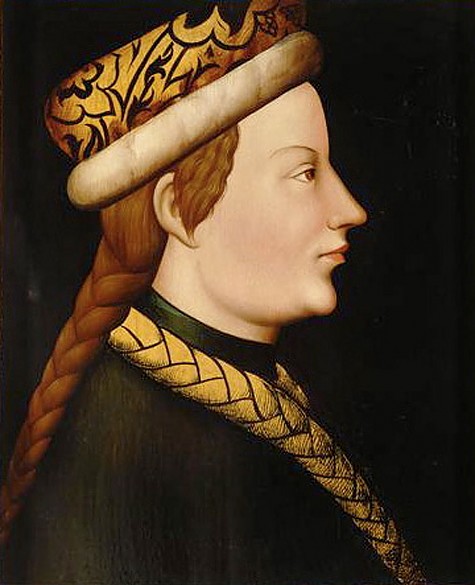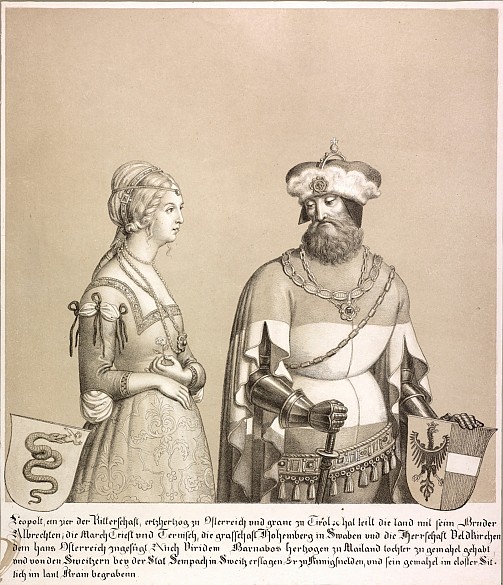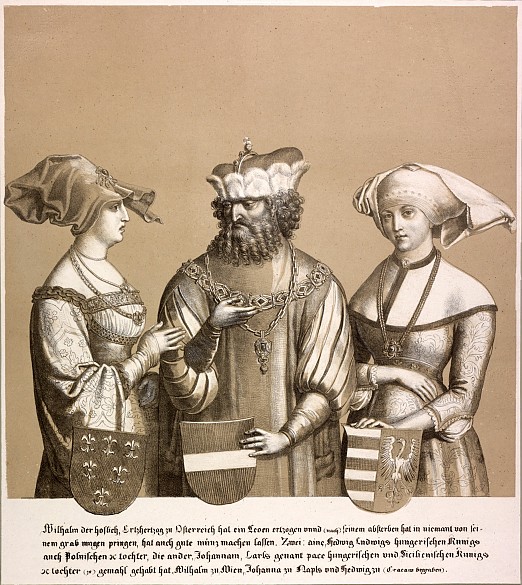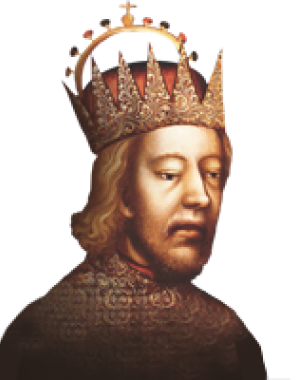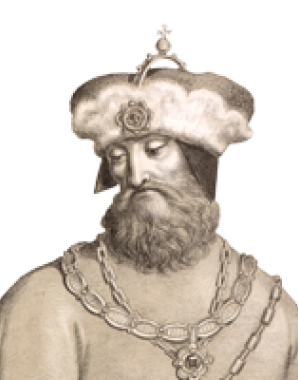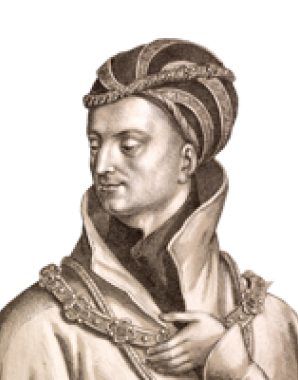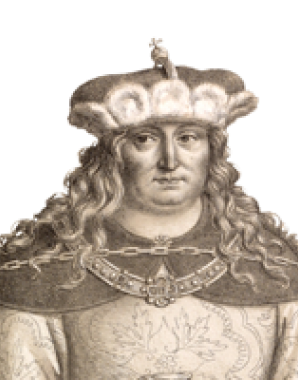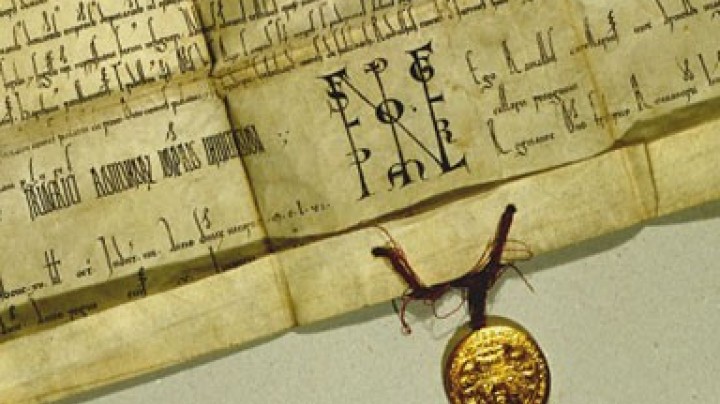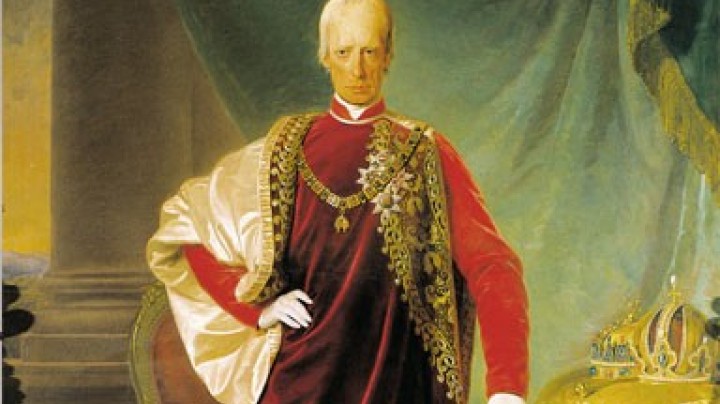Fraternal strife and territorial partitioning
Between 1379 and 1490 there were several ruling lines of the house of Habsburg: following the death of Duke Rudolf IV, whose inheritance fell to his younger brothers, the Habsburg possessions were partitioned for decades.
The structures of power in the Habsburg lands fell into a state of crisis with the premature death of Duke Rudolf IV, who was succeeded by his two younger brothers Albrecht III and Leopold III. As the elder, Albrecht took over the reins of government. With the support of the Emperor the two brothers were able to survive the first years of the crisis relatively well and made a number of important acquisitions such as Freiburg im Breisgau. When their financial situation became acute, the means of solving the problem resorted to by the two brothers included imprisoning all Jews in the towns and demanding ransom payments.
After the brothers had ruled together for a number of years, Leopold demanded greater decision-making powers. After a first compromise had not held for long, they met up at the Cistercian abbey of Neuberg an der Mürz in autumn 1379 to seek a permanent solution. In a partition treaty named after Neuberg it was established that Albrecht was rightful ruler in the Austrian lands on the Danube, while Leopold received Styria, Carinthia, Carniola, Tyrol, and the Swabian domains. For the next hundred years the house of Habsburg was divided into two lines, and for certain periods even three.
Duke Leopold III died in 1386 while fighting a small-scale war against the Swiss confederates near Lucerne. Albrecht III then ruled alone for some years, during which he made certain acquisitions. After his death, however, the family fell victim to internal power struggles. Initially the division of power between Albrecht III’s son Albrecht IV and the four sons of Leopold III was regulated by the Treaty of Hollenburg. However, disputes over inheritance weakened Habsburg power in this period in favour of the Estates, and the conflicts continued. From 1407 the two brothers Ernest the Ironman and Leopold IV were involved in armed hostilities that lasted several years.
The result of these family feuds was the formation of three groups of domains: Danube Austria (the duchy of Austria above and below the Enns), Inner Austria (Styria, Carinthia, Carniola), and Tyrol and the Swabian territories. While the Albertine line reigned in Danube Austria, the Leopoldine line divided into two in 1406, with Ernest the Ironman heading the Styrian and Duke Frederick IV the Tyrolean branch. The fact that the Estates were involved in all these conflicts enabled them to increase their power in the various duchies.
